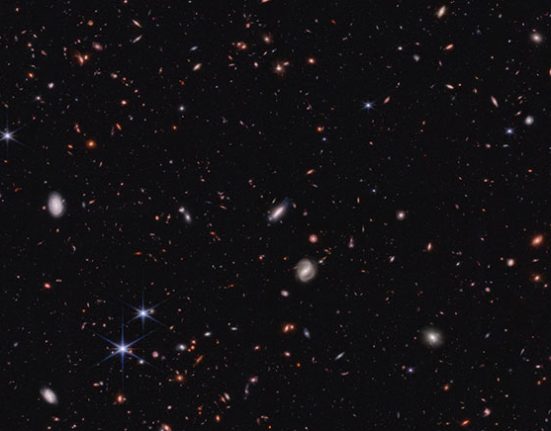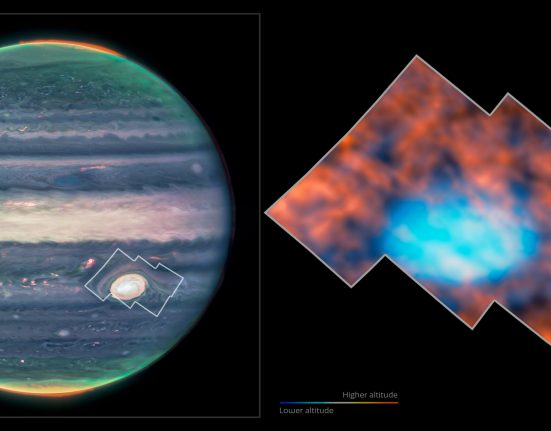
NASA / STScI / CEERS / TACC / S. Finkelstein / M. Bagley / R. Larson / Z. Levay
Tiny red dots: that's how astronomers describe some of the distant galaxies in images from the James Webb Space Telescope. Although they are small, once these ruby-colored spots caught our attention, they became impossible to miss.
They are compact galaxies that existed several hundred million years after the Big Bang, when the universe was still in its infancy. In fact, they would appear quite red to our eyes even if we could travel back in time to see them up close. However, the source of the red light from these galaxies remains a mystery. New research published in the journal Letters from the Astrophysics magazine try to resolve that issue.

B. Wang / Astrophysical Journal Letters 2024
Initial analyses of these early red galaxies found that they must host large numbers of old stars. While very massive stars tend to be bluer in color, they explode in supernovae soon after birth; lower-mass stars, which are redder, last longer. But given the limited time to form stars in such large numbers, other astronomers have suggested alternatives. For example, if a galaxy hosted a black hole at its center, still shrouded in dusty gas, that could explain the pink-tinged light without needing so many stars.
When Bingjie Wang (Penn State) and his collaborators explored three of these “little red dot” galaxies in detail, they discovered that the source of at least some of those red wavelengths is, in fact, a surprisingly ancient population of stars. According to this new analysis, these galaxies were producing stars by the dozens when the universe was just 500 million years old.
Rough Rubies
The galactic trio represents an intriguing selection of the thousands of galaxies that the James Webb Space Telescope (JWST) detected in early observations and that RUBIES survey scientists are now studying to follow up. The team is collecting a spectrum of each galaxy with JWST’s near-infrared spectrograph, as well as archival observations from the Hubble Space Telescope.
Of the thousands studied, three showed a strong feature in their spectra called Rest in BalmerIf the galaxies' light comes from stars, then their Balmer breaks likely come from the atmospheres of stars more than 100 million years old. However, the presence of the formation doesn't tell astronomers how many old stars there are. And Wang's team also finds that the spectra of two of the three galaxies show gas swirling around a supermassive black hole. The exact mass of those black holes is also uncertain: The black holes could contain anywhere from millions to hundreds of millions of suns.
Astronomers attempted to understand the origin of the galaxies' light using three options: one in which the central black hole contributes little and most of the light comes from an unexpectedly large population of old stars, one in which the central black hole contributes most of the light and only a few older stars are needed, and an intermediate option in which both old stars and a feeding black hole contribute to the galaxies' overall appearance.
The first of these options suggests unexpected bursts of star formation at the dawn of cosmic history. In the second and third options, it is the central black hole that ends up being more massive than expected for such small galaxies. “Neither of these models fully matches our current understanding of galaxy formation and evolution,” the team notes in its conclusions.
Deeper and redder
“This paper is particularly excellent, in my view, because it looks at the data in a thoughtful and careful way to test a range of possibilities, rather than pushing just one version of the narrative,” says Adam Carnall (Royal Observatory Edinburgh, UK), who was not involved in the study.
“It certainly seems likely,” he adds, “given the wide variety of JWST results, that galaxies have begun forming earlier and in greater numbers than we previously thought,” but he cautions: “Until we have more data, it’s hard to be sure how serious the problem is.”
Wang and colleagues agree: “Future deeper and redder observations are critical,” they write. While this study shows near-infrared data from JWST, longer mid-infrared exposures with the same telescope could help discern the nature of these tiny red dots.









Leave feedback about this